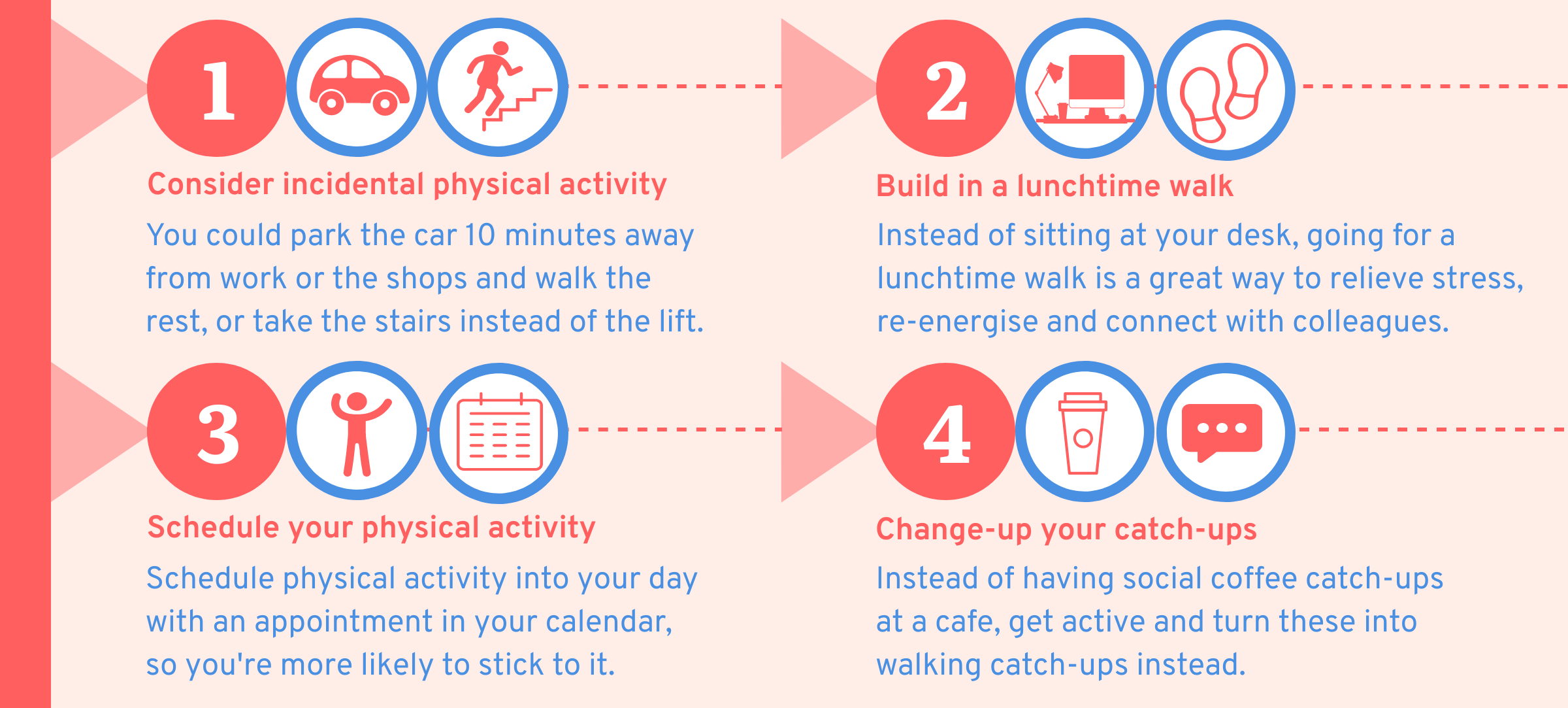Get the most out of your walking routine and mix up your regimen with different types of walking to maximise the physical, mental and emotional health benefits.
Wellbeing by Teacher is dedicated to improving the lives of teachers and school leaders by providing them with informative, evidence-based strategies to care for their body, mind and overall sense of personal wellbeing. In our annual reader survey, we asked educators how they care for their wellbeing outside of work, and many said they use walking to improve or maintain their overall health. In today’s article, we explore getting the most out of your walking routine and how to avoid it becoming boring or repetitive.
Walking has a multitude of health benefits, including reducing risk of heart disease, type 2 diabetes and obesity, as well as treating and preventing mental health conditions such as depression and anxiety (Better Health Channel, 2020).
Dr Megan Teychenne is a Senior Lecturer at the Institute for Physical Activity and Nutrition (IPAN) in the School of Exercise and Nutrition Sciences at Deakin University. She says walking is a fantastic activity for improving mental health and wellbeing.
‘It not only works as a treatment for those experiencing mental illness such as depression, anxiety, and severe mental illness such as post-traumatic stress disorder (PTSD), but it can also work to prevent future mental health problems. In fact, walking even just a couple of times per week, has been shown to reduce the risk of depression and boost overall mental wellbeing,’ she tells Wellbeing by Teacher.
For general health benefits, Australian Physical Activity Guidelines recommend adults undertake at least 150 minutes of moderate-intensity physical activity each week, which is the equivalent of a brisk walk.
Building walking into your routine
It is important to build walking into your routine. However, given lack of time is one of the main barriers to physical activity reported by adults Teychenne offers these simple ideas to build physical activity into your day.

Increasing the intensity of your walks
To improve your fitness levels, you need to continually adjust the intensity of the activity you’re doing. The Victorian Government’s Better Health Channel (2020) suggests increasing the intensity of your walks by walking up hills, walking with hand weights, increasing your walking speed, increasing the distance you walk and walking for longer time periods.
The good news, according to Teychenne, is it is never too late to start being physically active.
‘If you are currently inactive, start off by setting small and achievable goals, and build up gradually from there. You might start by walking a couple of times per week around the local park, then once you feel confident, you may increase this to three or four times per week,’ she says.
‘If you want to increase the intensity, without increasing the time (duration) you walk, you might consider walking with a heavy backpack, or alternatively taking the stairs when you have the opportunity.’
Walking has a multitude of health benefits including reducing risk of heart disease, type 2 diabetes and obesity, as well as treating and preventing mental health conditions such as depression and anxiety.
Keeping it social
Walking can be a time for social interaction. This can include simply chatting with a friend, or it could be an opportunity for a heart-to-heart, difficult conversation with somebody.
‘Given that social interaction is important for mental health, social walking (either walking with a friend, colleague or a walking group) is likely to provide extra benefits for mental health and wellbeing,’ Teychenne says.
‘That said, if you prefer to exercise in solitude (some people enjoy the time out for themselves) then that’s also great. Really, it’s about choosing an activity you enjoy, which will not only optimise mental health benefits but also help you stick to the physical activity.’
Avoid it becoming boring or repetitive
Some people find walking boring or repetitive, which can diminish their motivation or interest in exercising. Teychenne offers some simple tips for avoiding boredom when you’re out on your walk.
‘If you want to reduce boredom on your walking routine a few things you can do are: change the route you take each day; listen to your favourite tunes or podcast; use the time to connect with friends or family – either in person or via phone (just remember to bring your hands-free headphones) or try a guided walking meditation.’
References
Australian Government Department of Health. 2019, April 12. Australia's Physical Activity and Sedentary Behaviour Guidelines and the Australian 24-Hour Movement Guidelines. https://www1.health.gov.au/internet/main/publishing.nsf/Content/health-pubhlth-strateg-phys-act-guidelines#npa1864
Better Health Channel. 2020. Walking for good health. https://www.betterhealth.vic.gov.au/health/healthyliving/walking-for-good-health?viewAsPdf=true
Teychenne, M., White, R. L., Richards, J., Schuch, F. B., Rosenbaum, S., & Bennie, J. A. (2020). Do we need physical activity guidelines for mental health: What does the evidence tell us?. Mental Health and Physical Activity, 18, 100315.
How do you care for your own health and wellbeing? Do you have any fitness tips that you’d like to share with your Wellbeing by Teacher readers? We’d love to hear about it. Email us with a brief outline and we’ll be in touch.


